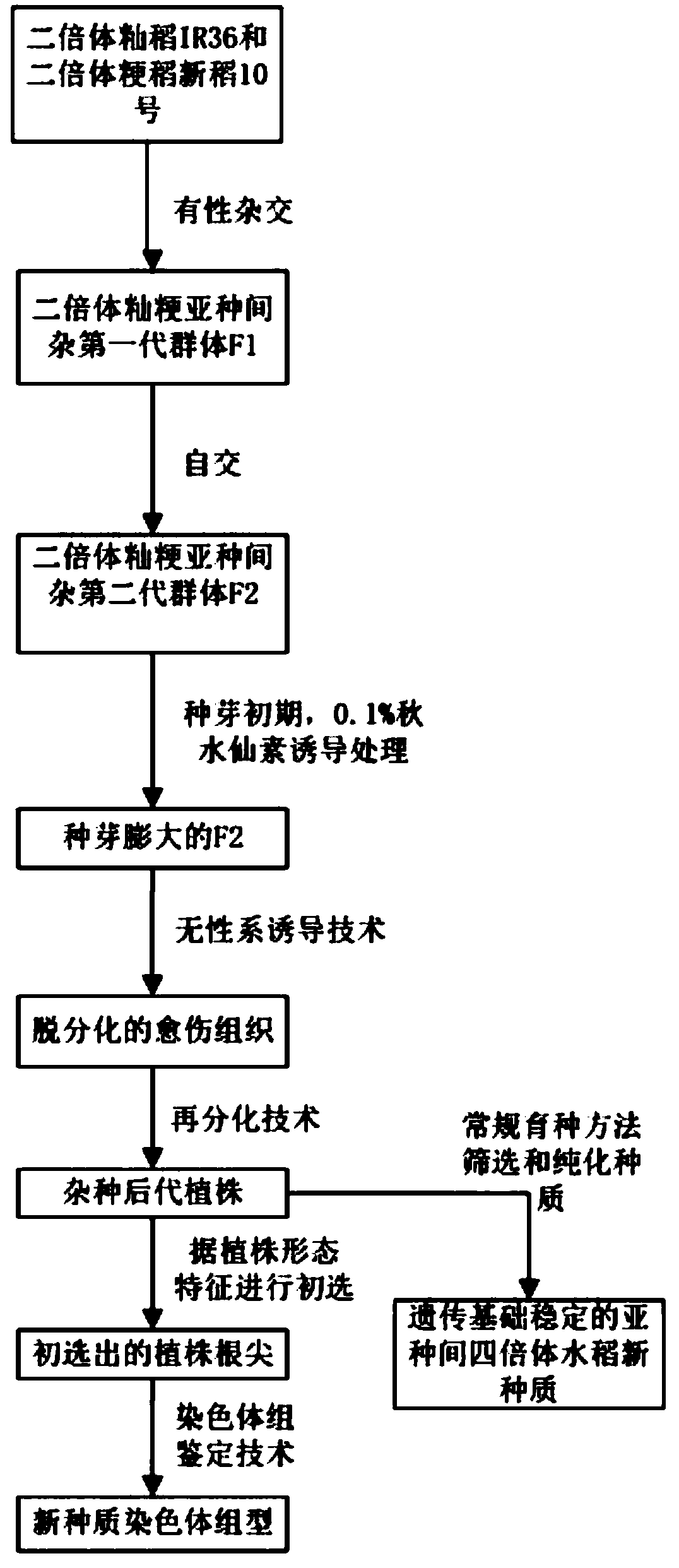Method for increasing induction frequency of new inter-subspecific tetraploid rice germplasm
A new germplasm and tetraploid technology, applied in horticultural methods, botanical equipment and methods, horticulture, etc., can solve the problem of low induction efficiency
- Summary
- Abstract
- Description
- Claims
- Application Information
AI Technical Summary
Problems solved by technology
Method used
Image
Examples
Embodiment Construction
[0023] The following will clearly and completely describe the technical solutions in the embodiments of the present invention with reference to the accompanying drawings in the embodiments of the present invention. Obviously, the described embodiments are only some, not all, embodiments of the present invention. Based on the embodiments of the present invention, all other embodiments obtained by persons of ordinary skill in the art without making creative efforts belong to the protection scope of the present invention.
[0024] like figure 1 As shown, the diploid indica rice variety “IR36(2)”, japonica rice variety “Xindao 10(2)” and their hybrid F1 and hybrid F2 were used as materials to induce tetraploid rice between indica and japonica subspecies. The testing of the germplasm can be summarized as an example of the inventive technique. In this research system, sexual crossing was carried out with "IR36(2)" and "Xindao 10(2)" as the hybrid parents, and the first generation (...
PUM
 Login to View More
Login to View More Abstract
Description
Claims
Application Information
 Login to View More
Login to View More - R&D
- Intellectual Property
- Life Sciences
- Materials
- Tech Scout
- Unparalleled Data Quality
- Higher Quality Content
- 60% Fewer Hallucinations
Browse by: Latest US Patents, China's latest patents, Technical Efficacy Thesaurus, Application Domain, Technology Topic, Popular Technical Reports.
© 2025 PatSnap. All rights reserved.Legal|Privacy policy|Modern Slavery Act Transparency Statement|Sitemap|About US| Contact US: help@patsnap.com

